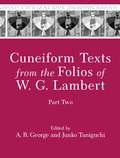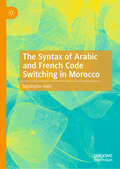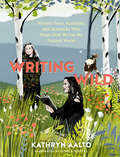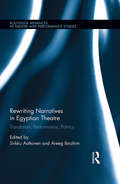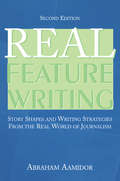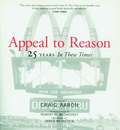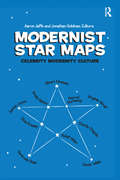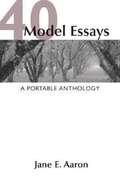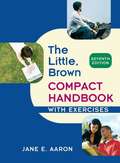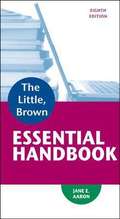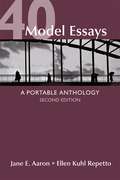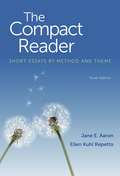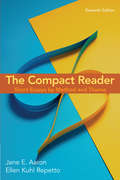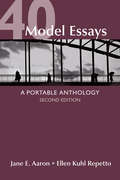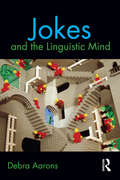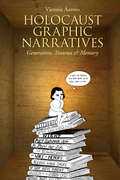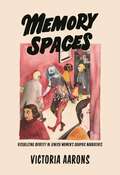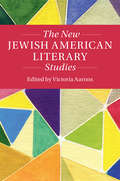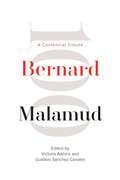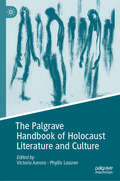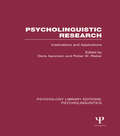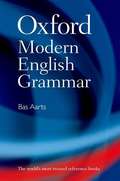- Table View
- List View
Cuneiform Texts from the Folios of W. G. Lambert, Part Two (Mesopotamian Civilizations #25)
by A. R. George, Junko TaniguchiThis book publishes 323 handcopies of cuneiform tablets found in the academic papers of W. G. Lambert (1926–2011), one of the foremost Assyriologists of the twentieth century. Prepared by A. R. George and Junko Taniguchi, it completes a two-part edition of Lambert’s previously unpublished handcopies.Written by Babylonian and Assyrian scribes in ancient Mesopotamia, the texts collected here are organized by genre and presented with a descriptive catalogue and indexes. The contents include omen literature, divinatory rituals, religious texts, a scribal parody of Babylonian scholarship, theological and religious texts, lexical lists, god lists, and a small group of miscellaneous texts of various genres. The tablets are mainly from the British Museum, but some come from museums in Baghdad, Berlin, Chicago, Geneva, Istanbul, Jerusalem, New Haven, Oxford, Paris, Philadelphia, Tokyo, Toronto, and Washington. In addition, there are copies of eight tablets whose current whereabouts are unknown.This third collection of Lambert’s handcopies published by Eisenbrauns—following Babylonian Creation Myths and Cuneiform Texts from the Folios of W. G. Lambert, Part One—is a crucial part of the intellectual history of the field of Assyriology. In addition, many of these texts are published herein for the first time, making them a valuable and important resource for further study.
Cuneiform Texts from the Folios of W. G. Lambert, Part Two (Mesopotamian Civilizations)
by A. R. George, Junko TaniguchiThis book publishes 323 handcopies of cuneiform tablets found in the academic papers of W. G. Lambert (1926–2011), one of the foremost Assyriologists of the twentieth century. Prepared by A. R. George and Junko Taniguchi, it completes a two-part edition of Lambert’s previously unpublished handcopies.Written by Babylonian and Assyrian scribes in ancient Mesopotamia, the texts collected here are organized by genre and presented with a descriptive catalogue and indexes. The contents include omen literature, divinatory rituals, religious texts, a scribal parody of Babylonian scholarship, theological and religious texts, lexical lists, god lists, and a small group of miscellaneous texts of various genres. The tablets are mainly from the British Museum, but some come from museums in Baghdad, Berlin, Chicago, Geneva, Istanbul, Jerusalem, New Haven, Oxford, Paris, Philadelphia, Tokyo, Toronto, and Washington. In addition, there are copies of eight tablets whose current whereabouts are unknown.This third collection of Lambert’s handcopies published by Eisenbrauns—following Babylonian Creation Myths and Cuneiform Texts from the Folios of W. G. Lambert, Part One—is a crucial part of the intellectual history of the field of Assyriology. In addition, many of these texts are published herein for the first time, making them a valuable and important resource for further study.
The Syntax of Arabic and French Code Switching in Morocco
by Mustapha AabiThis book posits a universal syntactic constraint (FPC) for code switching, using as its basis a study of different types of code-switching between French, Moroccan Arabic and Standard Arabic in a language contact situation. After presenting the theoretical background and linguistic context under study, the author closely examines examples of syntactic constraints in the language of functional bilinguals switching between French and forms of Arabic, proposing that this hypothesis can also be applied in other comparable language contact and translanguaging contexts worldwide. This book will be of interest to students and scholars of French, Arabic, theoretical linguistics, syntax and bilingualism.
Writing Wild: Women Poets, Ramblers, and Mavericks Who Shape How We See the Natural World
by Kathryn Aalto&“An exciting, expert, and invaluable group portrait of seminal women writers enriching a genre crucial to our future.&” —Booklist In Writing Wild, Kathryn Aalto celebrates 25 women whose influential writing helps deepen our connection to and understanding of the natural world. These inspiring wordsmiths are scholars, spiritual seekers, conservationists, scientists, novelists, and explorers. They defy easy categorization, yet they all share a bold authenticity that makes their work both distinct and universal. Featured writers include: Dorothy Wordsworth, Susan Fenimore Cooper, Gene Stratton-Porter, Mary Austin, and Vita Sackville-WestNan Shepherd, Rachel Carson, Mary Oliver, Carolyn Merchant, and Annie DillardGretel Ehrlich, Leslie Marmon Silko, Diane Ackerman, Robin Wall Kimmerer, and Lauret SavoyRebecca Solnit, Kathleen Jamie, Carolyn Finney, Helen Macdonald, and Saci LloydAndrea Wulf, Camille T. Dungy, Elena Passarello, Amy Liptrot, and Elizabeth Rush Part travel essay, literary biography, and cultural history, Writing Wild ventures into the landscapes and lives of extraordinary writers and encourages a new generation of women to pick up their pens, head outdoors, and start writing wild.
Rewriting Narratives in Egyptian Theatre: Translation, Performance, Politics (Routledge Advances in Theatre & Performance Studies)
by Sirkku Aaltonen Areeg IbrahimThis study of Egyptian theatre and its narrative construction explores the ways representations of Egypt are created of and within theatrical means, from the 19th century to the present day. Essays address the narratives that structure theatrical, textual, and performative representations and the ways the rewriting process has varied in different contexts and at different times. Drawing on concepts from Theatre and Performance Studies, Translation Studies, Cultural Studies, Postcolonial Studies, and Diaspora Studies, scholars and practitioners from Egypt and the West enter into dialogue with one another, expanding understanding of the different fields. The articles focus on the ways theatre texts and performances change (are rewritten) when crossing borders between different worlds. The concept of rewriting is seen to include translation, transformation, and reconstruction, and the different borders may be cultural and national, between languages and dramaturgies, or borders that are present in people’s everyday lives. Essays consider how rewritings and performances cross borders from one culture, nation, country, and language to another. They also study the process of rewriting, the resulting representations of foreign plays on stage, and representations of the Egyptian revolution on stage and in Tahrir Square. This assessment of the relationship between theatre practices, exchanges, and rewritings in Egyptian theatre brings vital coverage to an undervisited area and will be of interest to developments in theatre translation and beyond.
Real Feature Writing (Routledge Communication Ser.)
by Abraham AamidorReal Feature Writing emphasizes story shape and structure by illustrating several distinct types of feature and non-fiction stories, all drawn from the real world. Author Abraham Aamidor presents a collection of distinct non-deadline story types (profile, trend, focus, advocacy, and more), providing an introduction to each story type, a full-text example, a critical analysis of the example, and clear directions for producing similar stories. In this second edition, Aamidor and his guest contributors (all with real-world journalistic experience) demonstrate in clear, honest language how to write features. New for this edition are:*updated examples of feature writing, integrated throughout the text;*a chapter on ethical journalism, which takes a critical look at propaganda;*a chapter on international perspectives, including coverage of issues in the Middle East;*chapters on research, freelancing, content editing, copyediting, and literary journalism.This text is appropriate for upper-level journalism students, and will be a valuable resource for freelance writers and young working journalists needing guidance on writing features.
Appeal to Reason: 25 Years In These Times
by Craig Aaron Robert W. McChesney James Weinstein<P>In These Times, the national, biweekly magazine of news and opinion, has provided groundbreaking coverage of the labor movement, the environment, feminism, grassroots politics, minority communities, and the media for twenty-five years. Filled with new writing commissioned specially for this anniversary volume, images, and text highlights of the last quarter-century in the magazine, Appeal to Reason: The First 25 Years of In These Times showcases contributors to the magazine like Noam Chomsky, David Brower, and Alice Walker, to name just a few. <P>But it also asks an important question: Where do we go from here? For answers, Appeal to Reason turns to more than twenty leading progressive writers—including Barbara Ehrenreich, Juan Gonzalez, Salim Muwakkil, and Robert W. McChesney—who take a fresh look at the lessons of the past and suggest directions for the future. Exploring issues ranging from globalization and criminal justice to the environment and culture, Appeal to Reason lays a political and intellectual foundation for the debates, discussions, and movements of the next twenty-five years.
Sea Treasures
by Ira E. Aaron Charles Davis Joan SchellyThis textbook provides short stories and activities designed for the following skills: Story Problems and Solutions, Figuring Out Words, Getting Word Meaning, Using a Dictionary for Meaning, Story Characters, Using a Dictionary for Pronunciation, Recognizing Fact and Fiction, Using an Encyclopedia, Understanding a Point of View and Flashback, Understanding Idioms, Recognizing Types of Literature, Story Characters and Setting, Main Idea and Supporting Details, Classifying, Making a Summary, Reading for Different Purposes, Sequence Relationships, Reading Diagrams, Varying Reading Rate, Understanding Figures of Speech, and Analogous Relationships.
Modernist Star Maps: Celebrity, Modernity, Culture
by Aaron Jaffe and Jonathan GoldmanBringing together Canadian, American, and British scholars, this volume explores the relationship between modernism and modern celebrity culture. In support of the collection's overriding thesis that modern celebrity and modernism are mutually determining phenomena, the contributors take on a range of transatlantic canonical and noncanonical figures, from the expected (Virginia Woolf and F. Scott Fitzgerald) to the surprising (Elvis and Hitler). Illuminating case studies are balanced by the volume's attentiveness to broader issues related to modernist aesthetics, as the contributors consider celebrity in relationship to identity, commodification, print culture, personality, visual cultures, and theatricality. As the first book to read modernism and celebrity in the context of the crises of individual agency occasioned by the emergence of mass-mediated culture, Modernist Star Maps argues that the relationship between modernism and the popular is unthinkable without celebrity. Moreover, celebrity's strange evolution during the twentieth century is unimaginable without the intercession of modernism's system of cultural value. This innovative collection opens new avenues for understanding celebrity not only for modernist scholars but for critical theorists and cultural studies scholars.
40 Model Essays: A Portable Anthology
by Jane E. AaronIn response to requests from instructors and students for shorter and less expensive composition readers, this is "40 Model Essays" -- featuring material adapted from the successful "The Compact Reader".
The Little, Brown Compact Handbook with Exercises (7th Edition)
by Jane E. AaronThe Little, Brown Compact Handbook with Exercises packages the authority and currency of its best-selling parent, The Little, Brown Handbook, in a briefer book with spiral binding, tabbed dividers, and more than 150 exercises. Concise and accessible, The Little, Brown Compact Handbook helps writing students find what they need and then use what they find. It provides clear explanations of the writing process, grammar, usage, critical thinking, and argument. Its thorough, up-to-date coverage of research writing stresses the library as Web gateway, evaluation and synthesis of print and online sources, and intellectual honesty. It provides the latest documentation guidelines in MLA, APA, Chicago, and CSE styles.
The Little, Brown Essential Handbook (Eighth Edition)
by Jane E. AaronFor first year composition and undergraduate courses across the curriculum. The Little, Brown Essential Handbook , Eighth Edition, is a brief, accessible, and inexpensive pocket-sized handbook that answers questions about writing in the disciplines, the writing process, grammar and usage, research writing, and documentation. Teaching and Learning Experience This text will provide a better teaching and learning experience--for you and your students. It provides: · Minimal terminology, clear explanations and examples, and pointers for ESL writers: Help students at all levels of learning. · Extensive sections on academic writing, research writing, source documentation, and document design: Support writers in all disciplines. · Convenient pocket size, four-color design, spiral binding, and numerous reference aids: Make the book convenient to carry and easy to use.
40 Model Essays: A Portable Anthology
by Jane E. Aaron Ellen Kuhl RepettoAt about half the price of other rhetorically arranged readers,40 Model Essays: A Portable Anthologycombines concise but thorough instruction in the methods of development with a well-chosen selection of classic and contemporary model readings for writers. The second edition features a fresh mix of new and current selections to complement class-proven favorites; new advice on forming a thesis statement; and a wealth of captivating new writing topics. This volume in the popular Bedford/St. Martin's series of Portable Anthologies and Guides offers a trademark combination of high quality and great value.
The Compact Reader: Short Essays by Method and Theme (Tenth Edition)
by Jane E. Aaron Ellen Kuhl RepettoThe Compact Reader seamlessly combines four texts--a short-essay reader, a rhetorical reader, a thematic reader, and a brief rhetoric--into one slim volume containing three dozen engaging, high-quality essays.
The Compact Reader: Short Essays By Method And Theme (Eleventh Edition)
by Jane E. Aaron Ellen Kuhl RepettoThe Compact Reader offers an innovative dual organization; it can be taught rhetorically or thematically. Each rhetorical method is paired with an engaging thematic topic so that readings display the full range and flexibility of writing in each mode. Selections average just two or three pages in length, so that students can read them quickly, analyze them thoroughly, and emulate them successfully. A brief guide to reading and writing, detailed chapter introductions, and two final chapters on working with sources serve as a mini-rhetoric, providing students with the support they need. For instructors who want a concise, affordable, effective resource for teaching the connection between form and content, The Compact Reader is the perfect choice.
40 Model Essays: A Portable Anthology
by Jane Aaron Ellen RepettoCombining concise but thorough instruction in the methods of development with a conscientiously picked selection of classic and contemporary model readings for writers, 40 Model Essays contains advice on forming a thesis statement alongside a wealth of captivating new writing topics to help you succeed.
Jokes and the Linguistic Mind
by Debra AaronsThrough the lens of cognitive science, Jokes and the Linguistic Mind investigates jokes that play on some aspect of the structure and function of language. In so doing, Debra Aarons shows that these 'linguistic jokes' can evoke our tacit knowledge of the language we use. Analyzing hilarious examples from movies, plays and books, Jokes and the Linguistic Mind demonstrates that tacit linguistic knowledge must become conscious for linguistic jokes to be understood. The book examines jokes that exploit pragmatic, semantic, morphological, phonological and semantic features of language, as well as jokes that use more than one language and jokes that are about language itself. Additionally, the text explores the relationship between cryptic crossword clues and linguistic jokes in order to demonstrate the difference between tacit knowledge of language and rules of language use that are articulated for a particular purpose. With its use of jokes as data and its highly accessible explanations of complex linguistic concepts, this book is an engaging supplementary text for introductory courses in linguistics, psycholinguistics and cognitive science. It will also be of interest to scholars in translation studies, applied linguistics and philosophy of language.
The Cambridge Companion to: The Cambridge Companion to Saul Bellow
by Victoria AaronsSaul Bellow is one of the most influential figures in twentieth-century American literature. Bellow's work explores the most important cultural and social experiences of his era: the impact of the Holocaust, the urban experience of European immigrants from a Jewish perspective, the fraught failures of the Vietnam War, the ideological seductions of Marxism and Modernism, and the changing attitudes concerning gender and race. This Companion demonstrates the complexity of this formative writer by emphasizing the ways in which Bellow's works speak to the changing conditions of American identity and culture from the post-war period to the turn of the twenty-first century. Individual chapters address the major themes of Bellow's work over more than a half-century of masterfully crafted fiction, articulating some of the most significant cultural experiences of the American twentieth century. It provides a comprehensive and accessible overview of a key figure in American literature.
Holocaust Graphic Narratives: Generation, Trauma, and Memory
by Victoria AaronsIn Holocaust Graphic Narratives, Victoria Aarons demonstrates the range and fluidity of this richly figured genre. Employing memory as her controlling trope, Aarons analyzes the work of the graphic novelists and illustrators, making clear how they extend the traumatic narrative of the Holocaust into the present and, in doing so, give voice to survival in the wake of unrecoverable loss. In recreating moments of traumatic rupture, dislocation, and disequilibrium, these graphic narratives contribute to the evolving field of Holocaust representation and establish a new canon of visual memory. The intergenerational dialogue established by Aarons’ reading of these narratives speaks to the on-going obligation to bear witness to the Holocaust. Examined together, these intergenerational works bridge the erosions created by time and distance. As a genre of witnessing, these graphic stories, in retracing the traumatic tracks of memory, inscribe the weight of history on generations that follow.
Memory Spaces: Visualizing Identity in Jewish Women's Graphic Narratives
by Victoria AaronsAn exploration of the work of Jewish women graphic novelists and the intricate Jewish identity is complicated by gender, memory, generation, and place—that is, the emotional, geographical, and psychological spaces that women inhabit. Victoria Aarons argues that Jewish women graphic novelists are preoccupied with embodied memory: the way the body materializes memory. This monograph investigates how memory manifests in the drawn shape of the body as an expression of the weight of personal and collective histories. Aarons explores Jewish identity, diaspora, mourning, memory, and witness in the works of Sarah Lightman, Liana Finck, Anya Ulinich, Leela Corman, and more. Memory Spaces begins by framing this research within contemporary discourse and reflects upon the choice to explore Jewish women graphic novelists specifically. In the chapters that follow, Aarons relates the nuanced issues of memory, transmission of trauma, Jewish cultural identity, and the gendered self to a series of meaningful and noteworthy graphic novels. Aarons’s insight, close readings, and integration of contemporary scholarship are conveyed clearly and concisely, creating a work that both captivates readers and contributes to scholarly discourse in Jewish studies, women’s literature, memory studies, and identity.
The New Jewish American Literary Studies (Twenty-First-Century Critical Revisions)
by Victoria AaronsThe opening decades of the twenty-first century are distinguished by a newly framed and regenerated outlook of Jewish American literary studies. This volume introduces readers to the new perspectives, new approaches, and widening of interpretive possibilities in Jewish American literature accompanied by the changes of the new millennium. Now that we are over a decade into a new century, the field of Jewish American literary studies has begun to reshape itself in response to a 'new diaspora', a newly defined sense not only of Jewish American literature, but of America, an expansion of new genres, new voices, and new platforms of expression. This book re-evaluates questions of race, feminism, gender, sexuality, orthodoxy, assimilation, identity politics, and historical alienation that shape Jewish American literary studies. Several chapters show the influence of other cultures on the field such as Iranian-American-Jewish writing, Israeli-American, and Latin American literary expression, as well as the impact of Russian emigres.
Bernard Malamud: A Centennial Tribute
by Victoria Aarons Gustavo Sanchez CanalesMaster storyteller and literary stylist Bernard Malamud is considered one of the top three most influential postwar American Jewish writers, having established a voice and a presence for other authors in the literary canon. Along with Philip Roth and Saul Bellow, Malamud brought to life a decidedly American Jewish protagonist and a newly emergent voice that came to define American letters and that has continued to influence writers for over half a century. This collection is a tribute to Malamud in honor of the hundredth anniversary of his birth. Literary critic Harold Bloom suggests that “Malamud is perhaps the purest storyteller since Leskov,” the nineteenth-century Russian novelist and satirist. Novelist Cynthia Ozick, in a tribute to Malamud, described him as “the very writer who had brought into being a new American idiom of his own idiosyncratic invention.” Unlike other collections devoted to Malamud, this collection is international in scope, compiling diverse essays from the United States, France, Germany, Greece, and Spain, and demonstrating the wide range of scholarship and approaches to Bernard Malamud’s fiction. The essays show the breadth and depth of this masterful craftsman and explore through his short fiction and his novels such topics as the Malamudian protagonist’s relation to the urban/natural space; Malamud’s approach to death; race and ethnicity; the Malamudian hero as modern schlemiel; and the role of fantasy in Malamud’s fiction. Bernard Malamud is a comprehensive collection that celebrates a voice that helped to shape the last fifty years of literary works. Readers of American literary criticism and Jewish studies alike will appreciate this collection.
The Palgrave Handbook of Holocaust Literature and Culture
by Victoria Aarons Phyllis LassnerThe Palgrave Handbook of Holocaust Literature and Culture reflects current approaches to Holocaust literature that open up future thinking on Holocaust representation. The chapters consider diverse generational perspectives—survivor writing, second and third generation—and genres—memoirs, poetry, novels, graphic narratives, films, video-testimonies, and other forms of literary and cultural expression. In turn, these perspectives create interactions among generations, genres, temporalities, and cultural contexts. The volume also participates in the ongoing project of responding to and talking through moments of rupture and incompletion that represent an opportunity to contribute to the making of meaning through the continuation of narratives of the past. As such, the chapters in this volume pose options for reading Holocaust texts, offering openings for further discussion and exploration. The inquiring body of interpretive scholarship responding to the Shoah becomes itself a story, a narrative that materially extends our inquiry into that history.
Psycholinguistic Research: Implications and Applications (Psychology Library Editions: Psycholinguistics)
by Doris Aaronson Robert W. RieberOriginally published in 1979, this book represents an effort to bring together the two disciplines at the core of psycholinguistics, psychology and linguistics. It discusses a broad variety of theoretical approaches to psycholinguistics as well as covering a wide range of topics. At the time the book had four goals: to discuss many of the important contemporary issues in psycholinguistics; to explore the different views on major theoretical controversies; to provide an analysis of background literature as a framework in which to evaluate the issues and controversies; and to describe interesting high-quality research currently being done by the authors and some of their colleagues. Today it can be read and enjoyed in its historical context, with many of the chapters still relevant in psycholinguistic research today.
Oxford Modern English Grammar
by Bas AartsOxford Modern English Grammar is Oxford's brand new and definitive guide to English grammar. This book has been written by a leading expert in the field, covers both British and American English, and makes use of authentic spoken and written examples. Arranged in four clear parts for ease of use, its comprehensive coverage ranges from the very basic to the most complex aspects of grammar, all of which are explained clearly yet authoritatively. This descriptive source of reference is invaluable for those with an interest in the English language,undergraduate and postgraduate students, and for anyone who would like a clear guide to English grammar and how it is used.
